Decentralized, private, and seamless. That’s Web3 authentication for you.
Web2 authentication is popular and will likely stay relevant for many years to come. It’s convenient and commonplace that entering email addresses and passwords is second nature to us.
In addition, the one-tap social logins make this even more tempting.
But all this simplicity comes at a cost. Privacy.
These big tech conglomerates know so much, and the users get almost no control over their data being shared across platforms.
That’s where, as a developer, you need to incorporate something to help users avoid all this tracking and data sharing while granting access to your decentralized application (dApp).
In addition, you might want a more intelligent authentication process than a social login can provide.
That’s where Web3 authentication comes into the picture.
What is Web3 Authentication?
In a nutshell, Web3 authentication is a gateway to the blockchain-verse. At the onset, it works similarly to Web2 authentication flows.
For instance, a user clicks a crypto wallet to log in, which initiates the process with the user’s public key as the identifier. Subsequently, the user signs the login message with its private key to complete the sign-in.
In addition to being more private, it’s a smart way to let users sign in and allow granular access based on their wallet attributes like token balance or NFT ownership.
Conclusively, it’s a blockchain-native way to authenticate your users. Besides, it’s private (for users) and convenient (for you).
Web3 vs. Traditional Authentication
Let’s summarize this:
| Traditional (Web2) | Web3 Authentication |
| Social logins, Google-one tap, etc. | Crypto wallets authentication |
| Long-time data storage | Extremely short-term data storage |
| Sharing and tracking | No tracking or sharing with 3rd-parties |
| No user segmentation | Allows strategic user segmentation |
| Privacy invasive | Privacy friendly |
| Data breach risks | No such risks |
Consequently, Web3 authentication stands out as a more sophisticated approach of the two. However, it’s still new, and many users might not have a crypto wallet to authenticate with.
Therefore, it’s common to offer both and leave the choice to the users in addition to giving more coverage to the developers.
So, here are some of the handpicked tools that make implementing Web3 auth a cakewalk.
Stytch
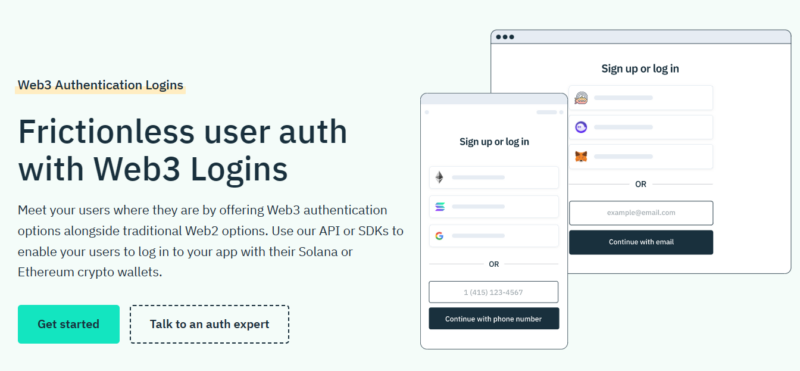
Stytch gives your users the best of both worlds with Web2 and Web3 authentication options, side-by-side.
In particular, the Web3 auth works with Ethereum and Solana wallets as of this writing.
Stytch has its direct APIs and SDKs for effortless integration. In addition, you can deploy Vessel, which allows sign-in using Ethereum and Solana wallets via a single authentication button.
Besides, Stytch allows you to use multi-factor authentication (MFA) with Web3. For instance, you can choose an OTP via email along with crypto wallet verification for added security.
Give it a try with the free tier, which allows up to 5000 monthly active users (MAUs). Later, you can upgrade for more MAUs, customizations, white labeling, and support.
Magic

Magic lets you deploy a passwordless Web3 authentication flow via magic links with over 20 blockchains.
Besides, every sign-in can also have Web2 auth options such as email and Google one-tap login. Moreover, Magic allows you to implement logins powered by FIDO2 security keys, biometrics, and MFA.
Magic has Web and mobile SDKs with feature-loaded pre-built widgets for quick implementation. The login UI can be white-labeled to match your brand voice and supports up to 30 languages.
Magic is free up to 1,000 MAUs, and afterward, it’s pay-as-you-go.
Dock
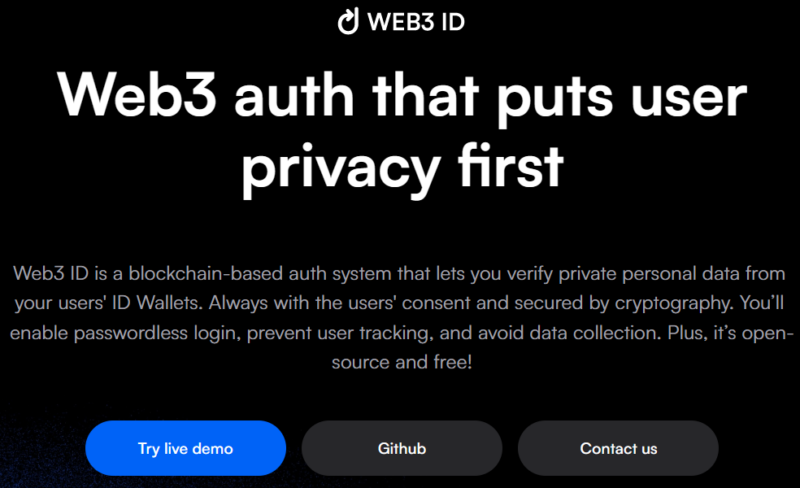
Dock takes an extremely user-privacy-friendly approach to Web3 authentication.
This is open-source and uses W3C’s decentralized identifiers and verifiable credentials with no long-term storage of user data.
It works with the user scanning a QR code, receiving notifications in ID wallet applications, and permitting specific information flow.
For privacy, users are free to create multiple Web3 IDs to avoid being tracked.
Dock also has means to age-verify, collect proof of token ownership, and ensure eligibility for specific Web3 projects without being privacy-invasive.
Finally, you can directly use this service as an OAuth 2.0 provider with your preferred auth library.
InteractWith

InteractWith is a free tool developers can add to their applications to allow Web3 wallet authorization with minimum fuss.
The best part of this method is it can also be used with conventional Web2 applications and as single sign-on (SSO) for multiple DApps.
One can make use of InteractWith API and SDKs to use this auth flow with any blockchain and associated wallet. So, a user will be redirected to a new window to select the preferred wallet and sign the login.
This tool provides in-depth information about the users, like their past blockchain interactions, wallet balance, DeFi, NFT holdings, etc. Consequently, this can be used for audience segmentation and laying out better monetization strategies.
Clerk

Clerk’s Web3 authentication works with a simple Sign in with Metamask button.
In addition, the developers can integrate MFA, including SMS codes and a few (coming soon) techniques, such as authenticator applications, hardware security keys, and one-time-use backup codes.
Moreover, Clerk has other means to make up for the absence of profile enrichment in Web3 authentication protocols. For this, you’ll have off-chain helpers to collect and verify phone numbers, email addresses, OAuth accounts, etc., via structured data and generic metadata.
In addition, building authentication flows is easy with Clerk API and SDKs. Finally, you can try Clerk without any credit card sign-up for up to 5000 MAUs.
Moralis

Moralis authentication API is compatible with all major blockchains and wallets.
The list of supported blockchains includes major EVM, Solana, and Aptos. Besides, it works well with popular crypto wallets such as MetaMask, RainbowKit, WalletConnect, etc.
Moralis Authentication API conforms to EIP-4361 standards which lets the users off-chain authenticate with EVM and Solana-supported wallets.
Finally, it has a free plan one can start with risk-free.
Arcana Network
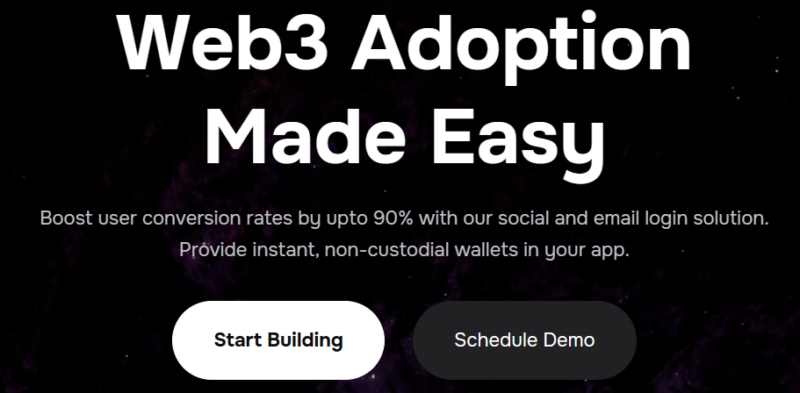
Arcana hopes to lower the barrier by helping you deploy Web2-like login flows within your Web3 dApps.
You can use Arcana SDKs to integrate auth flows in web apps built in HTML/CSS/JS or React/NextJS/Vue. In addition, Arcana can be deployed in apps that use wallet connectors like Wagmi or RainbowKit.
Its SDKs have pre-built templates that offer ultimate design flexibility to showcase your brand.
It currently supports iOS, Android, and integration with gaming engines like Unity and Unreal is promised in future updates. Currently, Aracana Network works with all EVM chains, has MFA support, and is free for the first 1,000 MAUs.
Privy
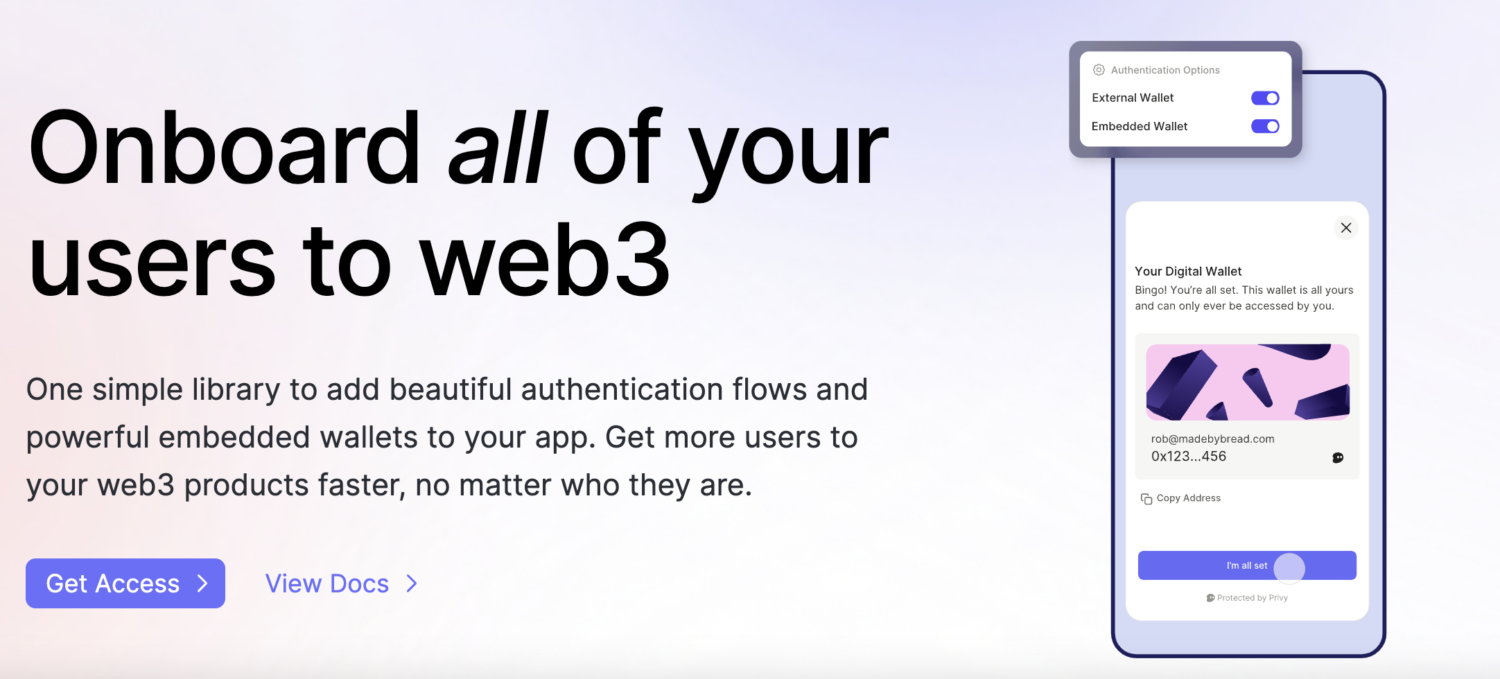
Privy combines the power of Web2 and Web3 authentication in a single login widget. This means your users can sign in with crypto wallets, email addresses, phone numbers, and even social media accounts.
Currently, you can integrate Privy authentication into any React application with its SDK. However, Privy lacks any native mobile SDKs as of this writing but has these features listed in its roadmap.
Privy is compatible with major EVM networks and can support multiple wallets via Wagmi.
On the pricing side, you don’t get any straightaway. Instead, there is a short form a developer must fill out for the Privy team to get back with a custom subscription and onboarding process.
Dynamic
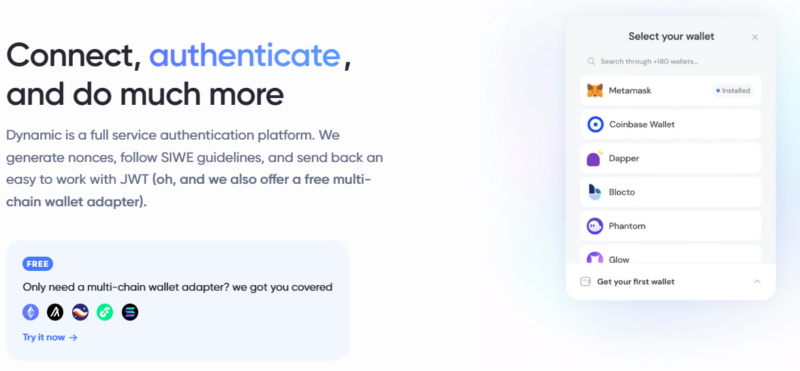
Dynamic Web3 authentication covers major chains and lets you integrate Web2 auth procedures like social media accounts for a 360-degree login experience.
The long list of compatible chains includes EVM network, Solana, Algorand, Flow, Starknet, and more. Besides, it boasts supporting hundreds of crypto wallets as of this writing, with more being added constantly.
Dynamic has React and Next.js SDKs. Additionally, it supports Wagmi and WalletConnect.
They have many more interesting features, including multi-wallet management and advanced customizations you can try with their 14-day free trial.
Authenticating the modern way!
Web3 authentication is arguably more secure and private than Web2 authentication protocols. Still, most platforms offer options to integrate both for the sake of user comfort.
The best part is you can get free trials or free tiers to get started. In addition, we have also mentioned completely free Web3 tools like InteractWith, which are great for startups.
PS: Web3 is not without its threats and downsides. So here are a few blockchain pentesting solutions to find and fix any possible vulnerabilities upfront.

